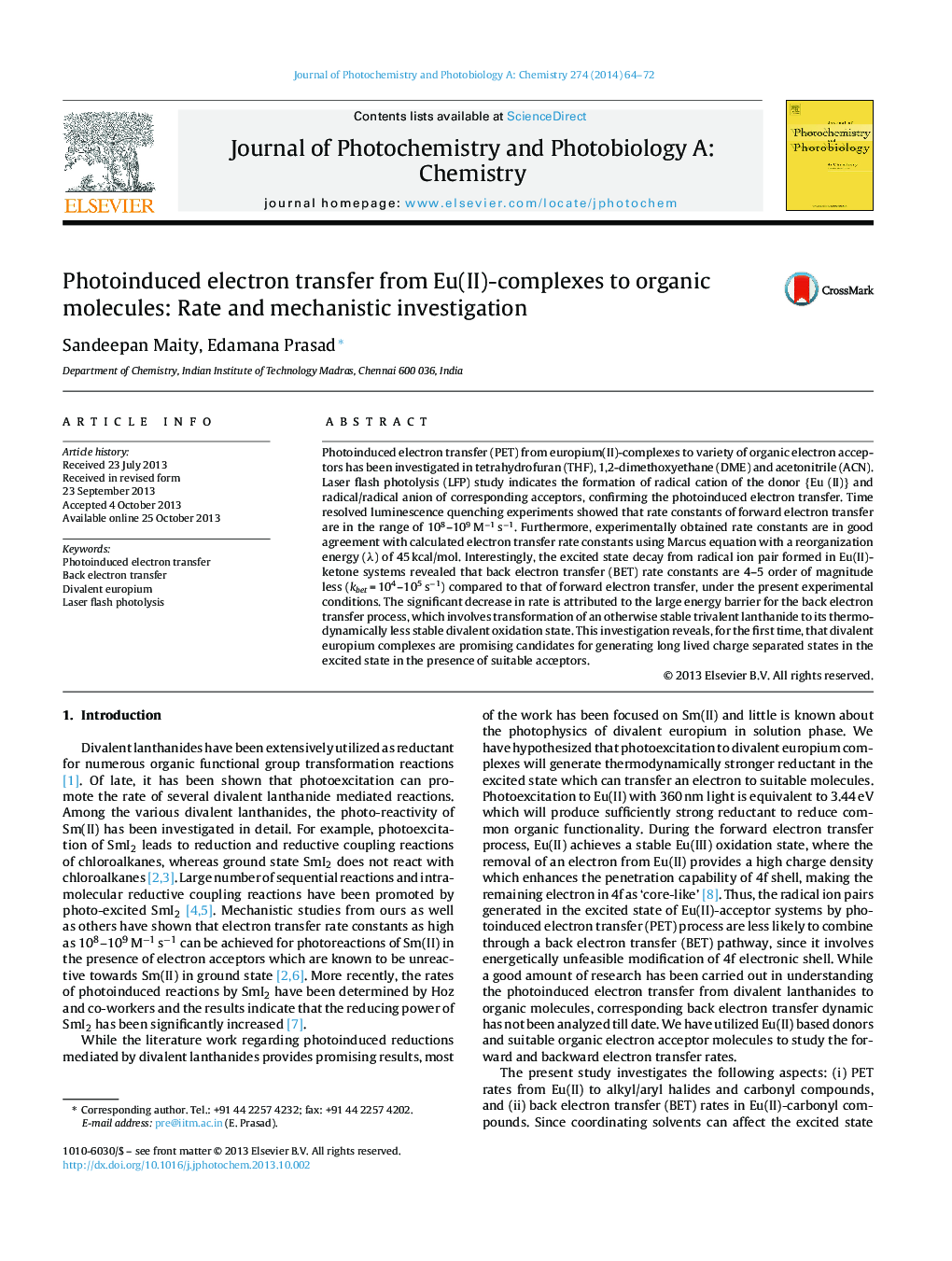| کد مقاله | کد نشریه | سال انتشار | مقاله انگلیسی | نسخه تمام متن |
|---|---|---|---|---|
| 26777 | 43976 | 2014 | 9 صفحه PDF | دانلود رایگان |

• Luminescent properties of divalent lanthanides {Eu(II) and Sm(II)}in solution phase (THF, DME and acetonitrile) has been investigated.
• Steady state and time resolved luminescent quenching of the divalent lanthanides by organic quencher molecules have been carried out.
• Rate constants for photoinduced electron transfer between the divalent lanthanides and selected quenchers have been determined using laser flash photolysis experiments.
• Rate constants for forward and back electron transfer process in the divalent lanthanide based donor–acceptor pairs are in good agreement with Marcus theory.
• Results indicated that the bimolecular forward electron transfer rates in the system fall in the range of 108–109 M−1 s−1, while back electron transfer rate falls many orders of magnitude (kbet = 104–105 s−1).
Photoinduced electron transfer (PET) from europium(II)-complexes to variety of organic electron acceptors has been investigated in tetrahydrofuran (THF), 1,2-dimethoxyethane (DME) and acetonitrile (ACN). Laser flash photolysis (LFP) study indicates the formation of radical cation of the donor {Eu (II)} and radical/radical anion of corresponding acceptors, confirming the photoinduced electron transfer. Time resolved luminescence quenching experiments showed that rate constants of forward electron transfer are in the range of 108–109 M−1 s−1. Furthermore, experimentally obtained rate constants are in good agreement with calculated electron transfer rate constants using Marcus equation with a reorganization energy (λ) of 45 kcal/mol. Interestingly, the excited state decay from radical ion pair formed in Eu(II)-ketone systems revealed that back electron transfer (BET) rate constants are 4–5 order of magnitude less (kbet = 104–105 s−1) compared to that of forward electron transfer, under the present experimental conditions. The significant decrease in rate is attributed to the large energy barrier for the back electron transfer process, which involves transformation of an otherwise stable trivalent lanthanide to its thermodynamically less stable divalent oxidation state. This investigation reveals, for the first time, that divalent europium complexes are promising candidates for generating long lived charge separated states in the excited state in the presence of suitable acceptors.
Study of photoinduced electron transfer from Eu(II)-complexes to selected organic molecules suggest that divalent europium complexes can act as photodonors to generate long lived charge separated ion pairs in the excited states with carbonyl compounds, under suitable experimental conditions, due to the large energy barrier for back electron transfer process.Figure optionsDownload as PowerPoint slide
Journal: Journal of Photochemistry and Photobiology A: Chemistry - Volume 274, 30 January 2014, Pages 64–72